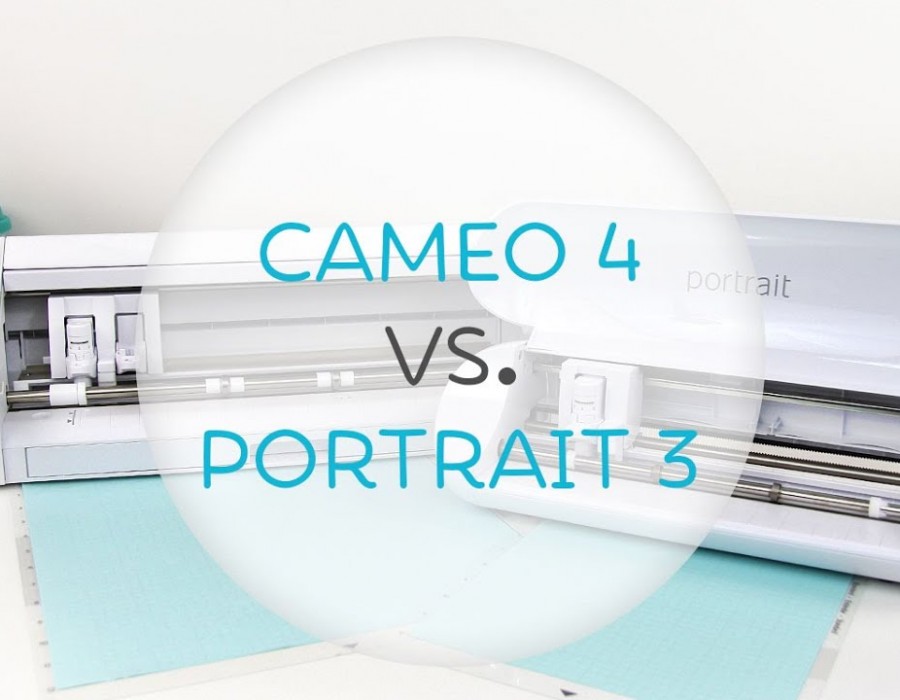Say “Cut.” Only if cutting is as easy as pronouncing it. Sadly, It is not. Whether it be any material, cutting is not easy as it sounds. Well, it is. But making a precise cut is tricky. And when stakes are as high as boasting your DIY art in front of a friend, one can’t rely on cheap tricks. For an occasion like this one needs a cutting machine.

A machine (like Silhouette Cameo 4 or the Portrait 3) that cuts a wide variety of materials precisely and professionally without you needing to apply physical labor. They are fast, compact, reliable, and produce high-quality output.
The only challenge stopping you from getting a cutting machine for your DIY needs is choice. Don’t get me wrong here. There are a lot of machines present in the market to choose from. The real challenge is choosing the perfect one that will likely suit your needs. To make it easier to choose, we are comparing two of the machines from this pool of devices. The Silhouette Cameo 4 and Silhouette Portrait 3.
Let us first briefly discuss these.
Silhouette Cameo 4
The Silhouette Cameo 4 is labeled as the “Ultimate Cutting Machine.” That’s what the manufacturers claim it to be. The cameo 4 brings industrial-grade blades capable of cutting through dozens of materials, including fabric, leather, vinyl, cardstock, etc. This machine is focused on raw cutting power and comprises portability to achieve that.
The Cameo 4 works with a dual carriage, which allows the machine to change settings accordingly. The Silhouette comes with built-in rollers, matless cutting capabilities, automatic tool detection, AutoBlade, Silhouette Studio software, and a month free subscription to the Silhouette Design store. All at a pretty decent price range.
Silhouette Portrait 3
The Silhouette Portrait 3 is the third generation in the Portrait series and is a small, PC-controlled cutting device produced by Silhouette. With its lightweight and compact design, the Portrait 3 is ideal for taking to events, craft parties, or any other situation. The tiny blades inside can easily cut fabrics, vinyl, cardboard, paper, and other materials up to 10 feet long and 8 inches wide. It is compatible with PixScan and offers a 2mm clearance room for deep cuts.
The Silhouette Portrait includes an 8-inch cutting mat, AutoBlade, Silhouette Studio software, a Bluetooth adapter, USB and power cords, 50 unique designs, and a one-month membership to the Silhouette Design Store.
How Similar are Silhouette Cameo 4 and Portrait 3?
Being produced by Silhouette, both machines are excellent. Though the people these machines intend to serve might not be the same.
When it comes to similarities, both of these–work without any issues, are built solid and have high-quality blades. And on top of that, both use Silhouette’s well-known Studio Design Software, which is a fantastic package that allows users to buy, import, or create their own designs.
Both work without a mat and have the built-in automatic tool detection feature.
Differences Between the Cameo 4 and Portrait 3
Design
When you put the two machines side by side, the first thing you’ll notice is that they’re drastically different in terms of size, with the Silhouette Portrait being nearly half the size of the Silhouette Cameo. And this is understandable since the Portrait is focused more on portability. That’s why it needs to have a small size.
The Cameo 4 measures 22.44 in. x 7.68 in. x 6.69 (inches) and weighs just 4.7 kg. In comparison, the Portrait stands at just 16.2 x 5.5 x 4.4 (inches) and weighs around 1.6 kg. So the difference here is quite drastic.
If you choose the Cameo over the Portrait, then plan to make a lot of space for it and make sure the piece of furniture it will be sitting on can support the additional weight.
Cutting Power
The Portrait 3 is lighter than the Cameo 4, which also means that it hosts less power, although one can’t always assume that, but it is true in this case. The mass the Cameo 4 wields gives it the edge over the Portrait 3, Thus being far more powerful than its counterpart.
The Cameo 4 boasts a unique dual-carriage design. The second carriage enables a cutting force of 5000 g/f (5 kg/f), the largest cutting power of any machine in its class, even if both devices have a 210 g/f cutting force in general.
The Cameo can readily cut materials up to 12 inches by 24 inches, while the Portrait can only handle projects up to a size of 8 inches by 12 inches.
The Silhouette Portrait is less expensive than the Cameo and has a more compact, smaller shape. It also lacks the sophisticated functionality that the Silhouette Cameo has as a result of the price reduction.
Unique Features
There also exist features that are unique to machines. We shall discuss those as well.
Dual-Carriage
The feature that sets the Silhouette Cameo apart from the Portrait 3 is the dual-Carriage system. This feature enables you to attach two tools to a machine concurrently. To do so, you may simultaneously carry out two distinct jobs on two different materials, thus decreasing the processing time by half.
Silhouette Go
Both of the machines can use the Silhouette Studio software. However, to solidify Portrait 3’s image as a portable device, the manufacturers developed the mobile application named Silhouette Go, which lets you be productive on the go.
Conclusion
So, these were the differences both machines carry. On one hand, the Silhouette Cameo 4 is a powerhouse; you may choose it if you are a hardcore producer and your work require you to cut large and board material. While you may choose the Portrait 3 if you prefer portability and you don’t need the extra power the Cameo 4 brings with it.
Source :- https://helpingwholeworld1.wordpress.com/2023/04/05/cameo-4-vs-portrait-3-in-depth-comparison-guide/





Comments